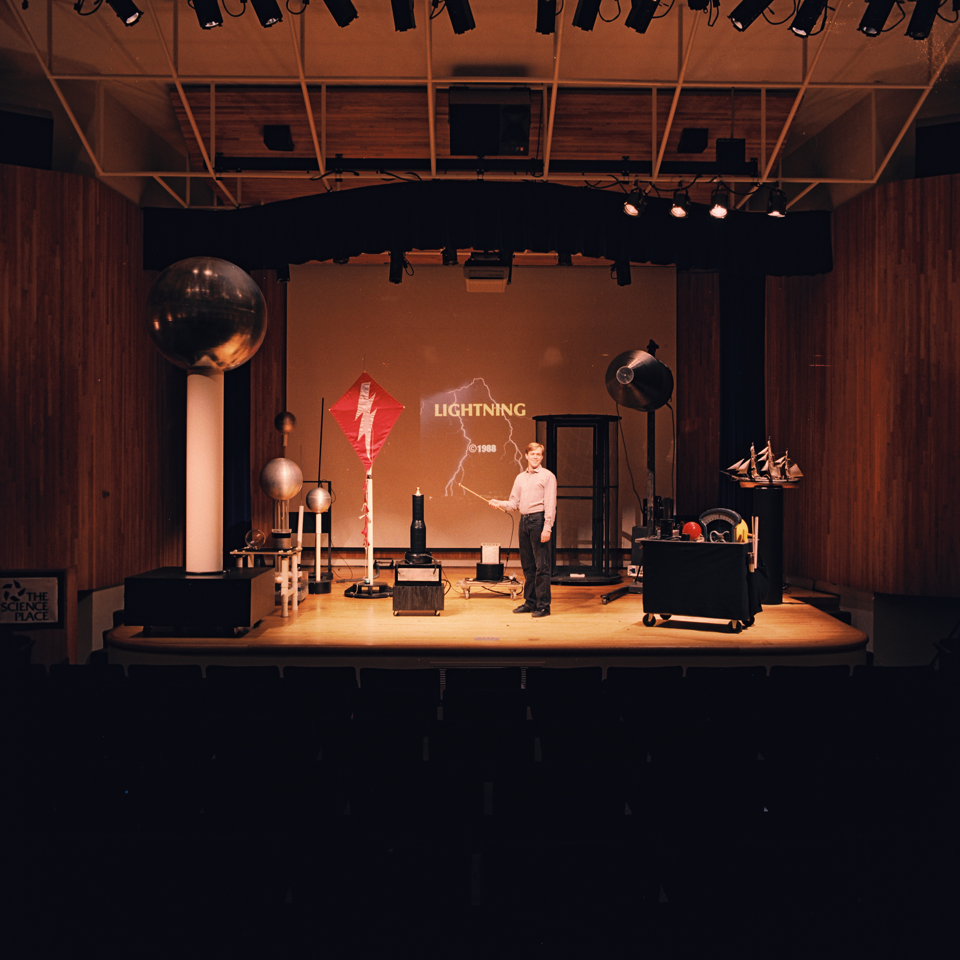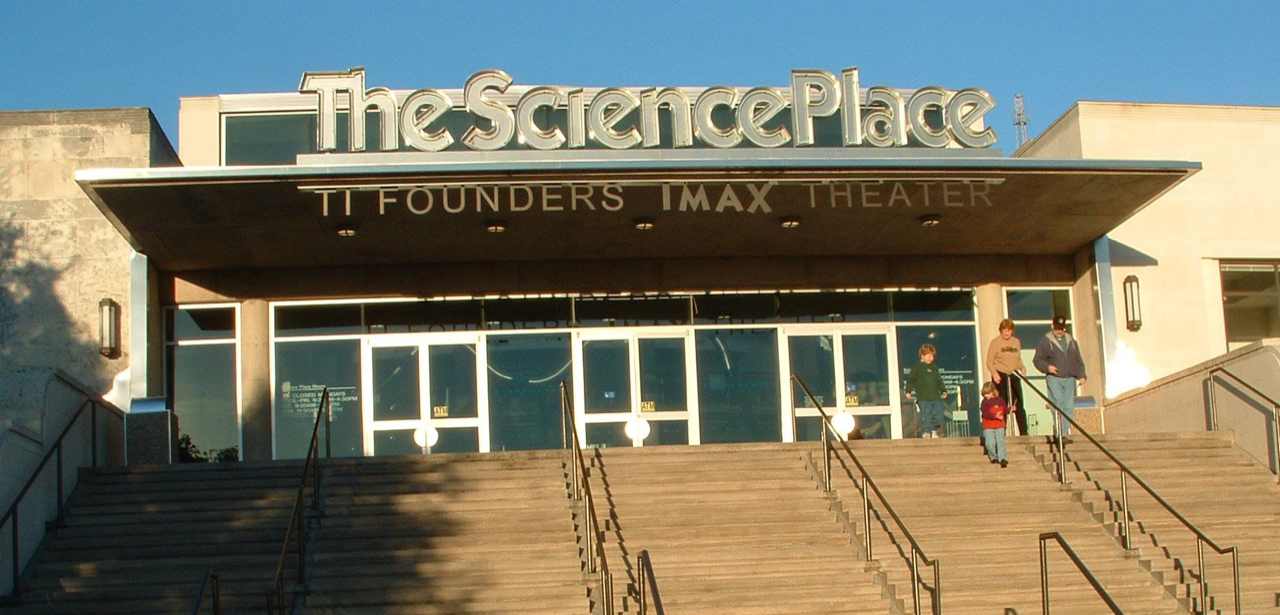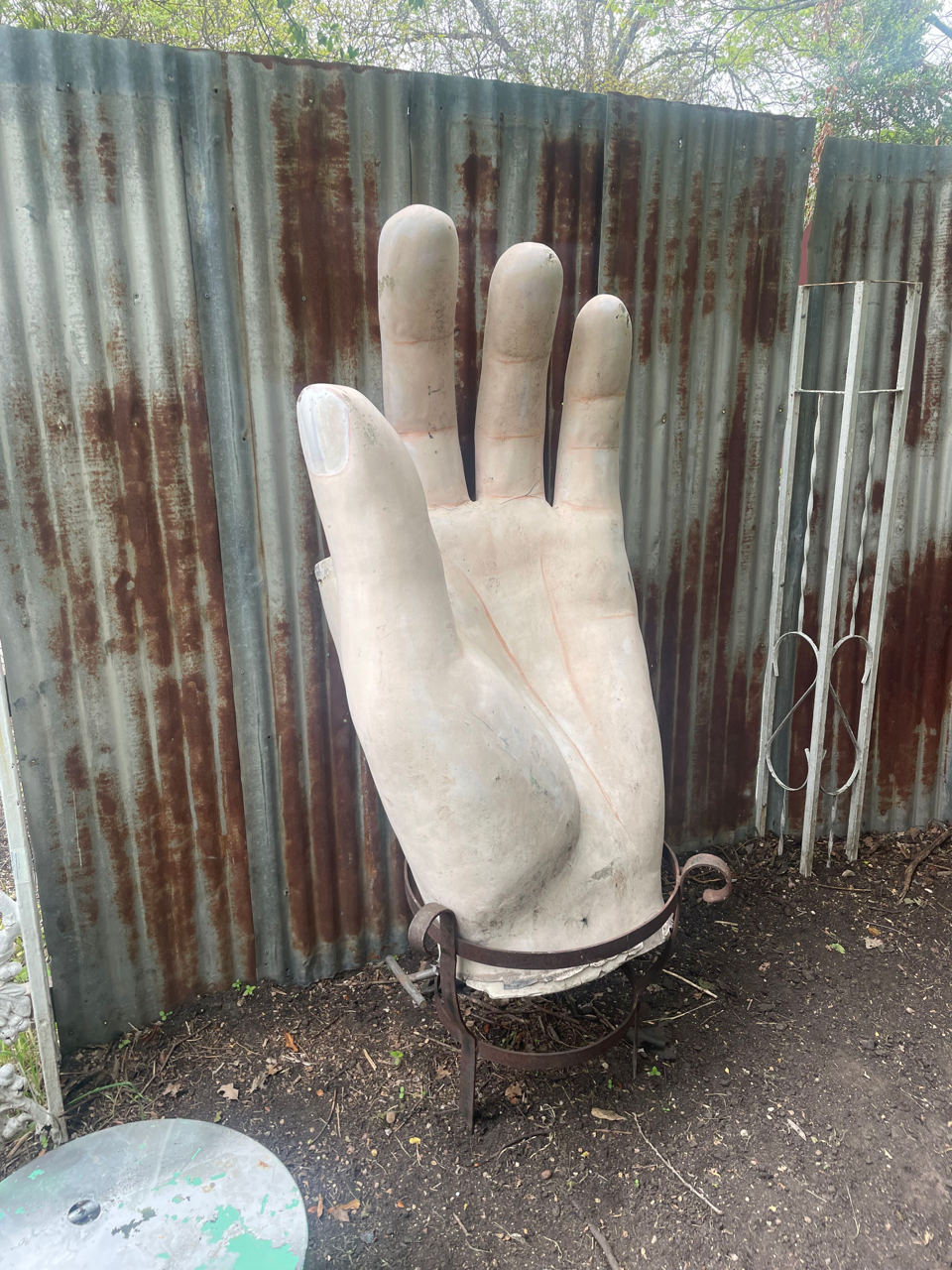
Courtesy of The Science Place Foundation

Audio By Carbonatix
Long before the Perot Museum of Nature and Science was even an idea, curious kids pondered the vast mysteries of the universe in an Art Deco building in Fair Park.
The Dallas Health Museum opened its doors in 1946. Just over a decade later, it was renamed the Dallas Health and Science Museum, before finally becoming The Science Place in 1981. Generations of STEM-centric kids and tweens grew up with memories of the exhibitions burned into their brains, so much so that a quartet of the museum’s fans sought out the fate of those hand-crafted tableaus.
Three and a half years ago, four curious millennials (Aven Stewart, Bailey Turfitt, Elise Broadway, and Andrew Boerder) – uncertain whether their childhood memories were accurate – got together and ultimately founded The Science Place Foundation.
“What happened is COVID was running rampant, and we started reminiscing about the Science Place,” recalls Turfitt. “Andrew was asking, ‘Do you remember that giant hand or that mechanical dinosaur?’ and we were going, ‘Of course we remember!’ But when we got online, we found nothing! It started to get kind of weird. This is our childhood, and we can’t find it anywhere.”
“We all grew up going on field trips at Science Place. I went to pre-school there,” says Stewart, who currently helms the Foundation stewardship with Turfitt. “The Science Place was a really notable museum – it was one of the first science museums that took an interactive approach to scientific education. Most of the exhibits were constructed in-house by a team of people who were creating really complex experiences that educated the children of Dallas in a more direct way.”

Pictured here in the 1990s, the Science Place influenced generations of curious kids.
Courtesy of The Science Place
Turfitt, with a college research background, started to dig and discovered a scrapbook with an image of the museum’s 14-foot interactive hand. “From that moment forward,” she says, “we decided this is lost history, so let’s try and see if we can piece it together.”
From YouTube clips to Reddit posts to a Facebook group, the Foundation began to source exhibition photos, blueprints and the names of former employees. Turfitt also found the museum’s old website on the internet archive Wayback Machine.
From the very beginning, the foundation had a wish list of exhibits they wanted to track down, including the “Electric Theater,” the “Giant Hand,” the “Drunk Driving Simulator,” “Bill’s Dinosaur,” a “Biking Skeleton” and the “Transparent Couple” (two life-sized humans with see-through skin).
Because The Science Place had a “look AND touch” policy that excited museumgoers with interactive exhibitions, their favorites included the ones they grew up manhandling. The “Electric Theater” had interactive Tesla coils and lightning displays, the “Giant Hand” was a pneumatic robot with a control panel, the “Driving Simulator” allowed kids to sit in the car and “Bill’s Dinosaur” (designed by the museum’s former head exhibitions Bill Smith and engineer Dave Sanders) had a control panel kids could use to make the big guy move.
“We just found that last week after searching for three years,” says Stewart. “We’re currently in the process of restoring him. He was really memorable because of the sounds and the presence he had.”
Many items, including the transparent couple, ended up in the Frisco Sci-Tech Discovery Center. Most of the missing exhibits were spirited away by former employees when the museum morphed into the Perot in 2012. Soon, what was intended as a digital-only museum became a collection of actual objects – to date, the Foundation has identified 30 former Science Place exhibits. They attempt to acquire them if they are at risk and currently have six in storage.
“Some things were saved, some made their way to the Perot, but officially a lot was thrown away,” Stewart says. “Unofficially, the employees saved a lot of stuff and pulled it out of the dumpsters. In most cases [these exhibits] were not as scientifically accurate as the Perot wanted them to be, so they were taken home and kept in their house or garage for 20 years. In some cases, we were literally digging in the dirt in a dirt-floor basement. It really is an archeological project.”
As the Foundation dug up these hidden gems, members came upon the MacCready Gossamer Penguin plane, a solar-powered aircraft with a 70-foot wingspan crafted of Styrofoam and Mylar. Formerly displayed in the Science Place’s lobby and held for two decades at the now-defunct Cavanaugh Flight Museum, it is safely stored in the Foundation’s archives. The eventual plan is to put it back together and loan it to other institutions.
Undoubtedly, Science Place influenced its foundation’s founders in ways that have permanently impacted their lives. Stewart has a career in software engineering, and Turfitt ultimately studied biology at the University of North Texas. Although the Perot does a pretty good job of keeping Gen A curious and engaged, the foundation’s partners feel the DIY methodology and freewheeling approach of The Science Place should continue to influence the kids of tomorrow.
With that goal in mind, the foundation hopes to take over a diorama case in the Fair Park Visitors Center (formerly the Natural History Museum) to showcase its discoveries. It is also currently working on a GoFundMe for a documentary about the museum.
Now that the Fair Park Master Plan is expanding the historically protected Park’s services and amenities, Turfitt and Stewart fervently hope that future generations will be eager to learn what made this quirky, interactive, curious institution so memorable in the first place.
“Somewhere down the road, we’d love to put on some exhibit with some of these artifacts,” says Turfitt. “We’d love to have ‘Bill’s Dinosaur’ roaring again and have kids be able to play with it. We’d love to see the exhibits we’ve acquired and restored available to the public.”
Adds Stewart, “It’s an effort to ensure this part of Fair Park history or Dallas history is preserved because it was a very special place. It was the crown jewel of the education system of many school districts around Dallas. We want to see that preserved and recognized and make sure the people that made it happen were also recognized for their contribution to the culture of Dallas.”

Everyone loves a giant hand! This one topped the list of exhibits the Foundation wanted to rediscover.
Courtesy of The Science Place Foundation